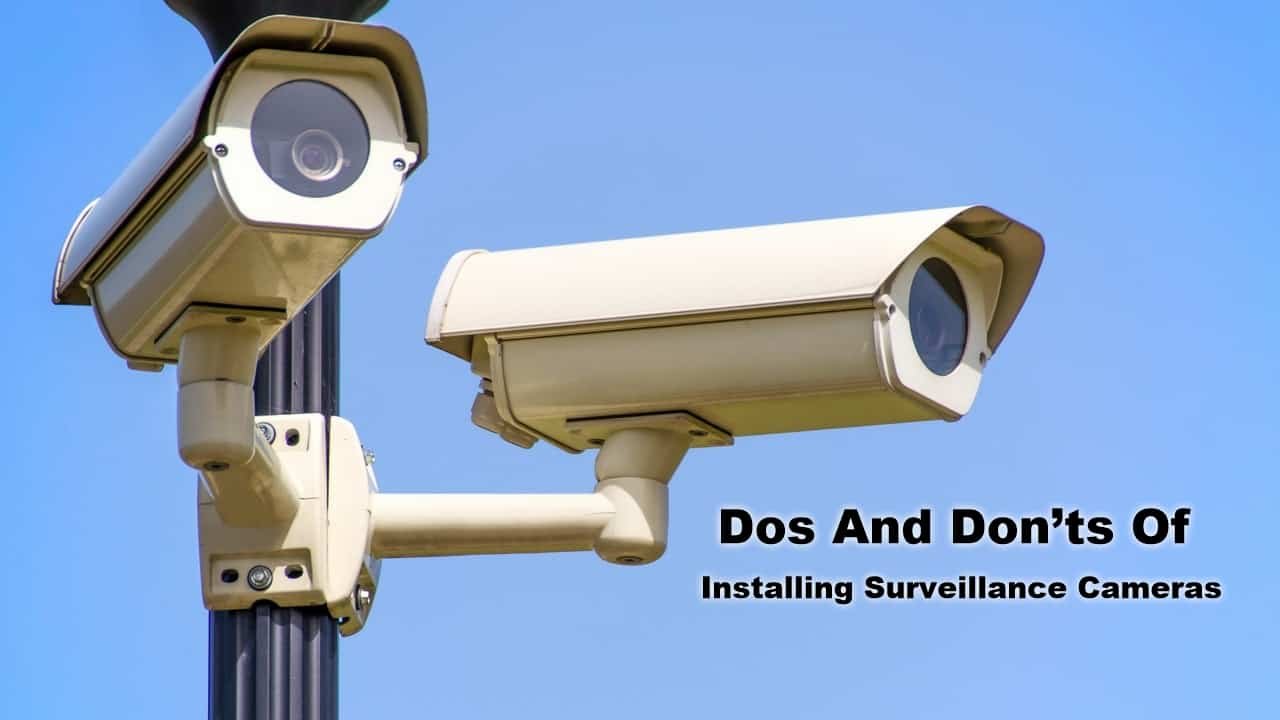Surveillance cameras are video cameras used for the purpose of observing an area. They are often connected to a recording device or IP network.
They also may be watched by a security guard or law enforcement officer. Humans do not have to review all of the camera footages anymore as there is automated software that organizes digital video footage into a searchable database, and by video analysis software (such as VIRAT and Human ID). Motion sensors only record when there is motion, reducing the amount of footage recorded and significantly saving on storage space. With continuously improving technology, cameras, and recording equipment are simple to use, cheaper and more accessible to people for use in home security systems and for smaller businesses for everyday surveillance.
There are various types of security cameras designed to deliver indoor or outdoor views, in well-lit conditions or when night vision is needed, and also permit remote monitoring which can be done using a laptop, tablet or smartphone. Security cameras include spy cameras and a motion-activated hidden camera etc.
There are a number of considerations to take into cognizance when installing a surveillance camera.
Firstly the Dos while installing surveillance cameras
Choose the right place to install the surveillance camera:
- Place the camera where the roof or ceiling meets the wall. The upper corner naturally shields the camera from the elements, and it can usually give you the widest angle of viewing, making it the ideal spot for surveillance cameras. It is also a good location where anyone cannot reach. Therefore lowering the chances that the camera will be broken or tampered with. You want to also keep it where it can be easily seen, as this quickly dissuades some thieves from even attempting to burgle your home or office. You may also choose to use a protective plate to hinder access to criminals.
- Bushes provide decent cover for prowlers. Let your cameras focus on heavily-trafficked or shrub-heavy locations to increase your visibility. Other places to face your camera include near walkways, gates, and heavily-trafficked areas near your home.
Install the camera properly:
Ensure that when the cameras are installed, they are installed properly and so will not shake. Vibrations reaching the wall from walking and other movements can shudder and distort the image that it is transmitted.
Ensure the set up is weather and water resistant:
If your cameras are to be outside, ensure that you set up weather-resistant and waterproof systems. Make use of a weatherproof case to shield it from blowing rain or heavy winds and sandstorms. Otherwise, they will break down quickly or transmit very low-quality images.
Use infrared lights cameras:
Use cameras with infrared lights so that clear pictures will be recorded at night. If a robbery or break-ins occur after hours, the camera systems will still work effectively.
If you have an attic, set your base unit there. The attic is a very convenient spot for all of your cameras’ wiring to originate from as it minimizes the need to string cables up and down walls if they can be run on the insides of the eaves under a roofline.
There are several don’ts when installing a camera. Now see,
Don’ts of installing surveillance camera
Don’t go only for the front door:
Do not limit your cameras to only your front door. Surveillance cameras should be installed near your back doors, side entrances, and sliding glass entryways. Make sure all of the ways into and out of your building are covered. A particularly clever robber can use the one exposed exit as a blind spot to break in and bypass the surveillance cameras.
Don’t install a camera on the wrong places:
- Do not place a camera right above a basement window. It can be easily disabled if it is within reach of burglars. Mount it under the eaves or on a second-story roofline and direct the lens toward the basement window.
- Do not attach a camera to a gutter. The camera is completely exposed to the weather and the weight of the camera will put undue stress on the guttering system.
- Do not install a camera in an area which won’t be well-lit at night. Install exterior lighting with motion sensors in the area that is being observed, or make sure the camera has infrared settings or lens that work in low light.
Don’t go for completely wireless:
Do not assume wireless means completely wireless. Even if your video surveillance is wireless, plug all cameras into a power source. Wireless signal simply sends the video to a device, like a computer or mobile phone. The camera still needs corded power to function.
Don’t leave open wires when you are installing a camera:
Do not leave any wires exposed. They are more prone to wear and tear when exposed in the open. It also poses a security threat as it may lead robbers to believe that cutting or tampering with the wires will disable the camera. besides that, it increases the probability of a home or office being targeted more often than not.
Don’t do it yourself:
Lastly, do not install your security cameras by yourself. Have a professional technician get it done. Improper installation can lead to several problems from the screen being blurry to the cameras failing to turn on or record.
The essence of installing surveillance cameras is to protect and monitor a home or business, and you want to make sure that you follow relevantly do’s and don’ts to make the best of the security system.
Thanks for reading. We hope you have enjoyed the article. Read security related article:- How Can You Be Benefited With Wi-Fi Security Camera.
